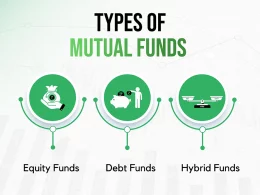In the rapidly evolving world of financial technology, blockchain has emerged as a transformative force. Initially introduced as the backbone of cryptocurrencies like Bitcoin, blockchain technology is now revolutionizing the way financial transactions are processed and secured. This decentralized digital ledger is changing the traditional banking and financial landscape by offering enhanced security, transparency, and efficiency.
This article will explore the role of blockchain in financial transactions, focusing on its benefits, challenges, and future prospects. We will also analyze how it compares to traditional systems and discuss its impact on various sectors within the financial industry.
Understanding Blockchain Technology
Blockchain is a distributed ledger technology (DLT) that records transactions across multiple computers in a way that ensures the data is secure, transparent, and immutable. Each block in the chain contains a record of several transactions, and once a block is added to the chain, it cannot be altered. This makes blockchain an ideal solution for secure, tamper-proof transaction recording.
Unlike traditional centralized systems where one entity controls the database, blockchain uses a decentralized network of nodes (computers) to verify and record transactions. This eliminates the need for intermediaries, such as banks or payment processors, reducing costs and increasing the speed of transactions.
Key Features of Blockchain Technology:
- Decentralization: No single entity has control over the network.
- Immutability: Once recorded, data cannot be changed or deleted.
- Transparency: All participants in the network can access the transaction history.
- Security: Advanced cryptographic techniques protect data from being tampered with.
Blockchain in Financial Transactions: The Benefits
The integration of blockchain technology into financial transactions has the potential to bring significant advantages to both consumers and institutions.
1. Enhanced Security
Blockchain’s decentralized nature and use of cryptographic methods make it highly secure. Transactions are recorded across multiple nodes, making it extremely difficult for hackers to alter or manipulate data. This level of security is particularly beneficial in reducing fraud and identity theft, which are common concerns in traditional financial systems.
2. Faster Transactions
Traditional financial systems, especially cross-border payments, can take days to process due to the involvement of multiple intermediaries. Blockchain allows transactions to be verified and completed in real time, significantly reducing the time required for payment settlement.
3. Cost Reduction
By eliminating intermediaries, blockchain reduces transaction fees associated with cross-border payments, remittances, and other financial services. Financial institutions can save billions in processing fees annually, and consumers can benefit from lower transaction costs.
4. Transparency and Trust
Since blockchain transactions are visible to all participants in the network, it enhances transparency. This helps reduce the risk of fraudulent activities and builds trust between parties involved in a transaction. Transparency also enables better auditability, making regulatory compliance easier for financial institutions.
5. Financial Inclusion
Blockchain has the potential to bring financial services to underserved populations. In many parts of the world, people lack access to banking services due to infrastructure limitations. Blockchain enables these individuals to participate in the global economy by providing access to digital financial services, even without a traditional bank account.
Challenges and Limitations of Blockchain in Financial Transactions
While blockchain presents significant opportunities, there are also challenges and limitations to its adoption in financial transactions.
1. Scalability Issues
One of the major challenges with blockchain is its scalability. As the number of transactions grows, the network can become congested, leading to slower transaction times and higher fees. This is particularly evident in public blockchains like Bitcoin and Ethereum, where network congestion is a common issue.
2. Regulatory Uncertainty
Blockchain technology operates in a largely unregulated space, and different countries have varying regulations concerning cryptocurrencies and blockchain-based transactions. This regulatory uncertainty can deter financial institutions from fully adopting blockchain, as they may face compliance challenges or legal risks.
3. Energy Consumption
Public blockchains, especially those that use proof-of-work (PoW) consensus mechanisms, require significant computational power to validate transactions. This results in high energy consumption, raising concerns about the environmental impact of blockchain technology.
4. Integration with Legacy Systems
Many financial institutions still rely on legacy systems that are not compatible with blockchain technology. The process of integrating blockchain with existing systems can be complex, time-consuming, and costly, which may hinder its widespread adoption.
5. Privacy Concerns
While blockchain is transparent, some financial transactions require a degree of privacy. In public blockchains, transaction details are visible to everyone, which can raise concerns about data privacy. However, solutions like private or permissioned blockchains are being developed to address this issue.
Comparative Analysis: Blockchain vs. Traditional Financial Systems
The comparison between blockchain-based financial transactions and traditional systems highlights the transformative potential of blockchain technology. The following table outlines the key differences:
| Feature | Blockchain Financial Transactions | Traditional Financial Systems |
|---|---|---|
| Transaction Speed | Near-instant for local transactions, faster cross-border payments | Delays, especially in cross-border transactions (can take days) |
| Transaction Costs | Lower costs due to elimination of intermediaries | Higher costs due to fees from banks and intermediaries |
| Security | Highly secure with cryptographic protection | Vulnerable to fraud, hacking, and data breaches |
| Transparency | Full transparency for all network participants | Limited transparency; often controlled by central entities |
| Regulation | Limited regulation; subject to evolving laws | Heavily regulated with strict oversight |
| Intermediaries | No intermediaries required | Multiple intermediaries (banks, payment processors) involved |
| Scalability | Can face scalability challenges (e.g., network congestion) | Scalable, but slower and more expensive |
| Energy Efficiency | Can be energy-intensive (e.g., PoW systems) | More energy-efficient, but traditional systems require large infrastructures |
Use Cases of Blockchain in Financial Transactions

Blockchain technology is being implemented in various financial sectors to streamline and secure processes. Below are some of the prominent use cases:
1. Cross-border Payments
Blockchain is transforming international payments by enabling fast, secure, and cost-effective transfers. Traditional cross-border transactions involve multiple banks and intermediaries, leading to delays and high fees. Blockchain eliminates these intermediaries, reducing transaction time and cost.
2. Trade Finance
Trade finance involves the exchange of goods and services across borders, a process that is often slowed by paperwork and manual processes. Blockchain provides a digital, transparent platform for tracking shipments, contracts, and payments, making the process more efficient.
3. Smart Contracts
Smart contracts are self-executing contracts with terms and conditions written directly into code. They automatically execute when predefined conditions are met, eliminating the need for intermediaries and reducing the risk of disputes. In financial transactions, smart contracts can automate processes like loan disbursements, insurance claims, and investment settlements.
4. Securities and Asset Management
Blockchain enables the tokenization of assets, such as stocks, bonds, and real estate, allowing them to be traded on a digital ledger. This reduces the need for brokers and custodians, streamlining the process and making asset management more accessible and efficient.
5. Banking the Unbanked
Blockchain has the potential to provide financial services to the unbanked population in developing countries. With blockchain, individuals without access to traditional banking systems can engage in financial transactions using a mobile phone and an internet connection.
Future Prospects of Blockchain in Financial Transactions
The future of blockchain in financial transactions is promising, but its success depends on overcoming current challenges. Governments and regulators are beginning to recognize the importance of blockchain, and new regulations are being developed to facilitate its adoption. As technology evolves, solutions for scalability, energy consumption, and privacy concerns will likely emerge, making blockchain more viable for mainstream financial applications.
Financial institutions are also investing heavily in blockchain research and development, exploring how the technology can be integrated into their operations to improve efficiency and reduce costs. Additionally, the rise of central bank digital currencies (CBDCs) is expected to further drive the adoption of blockchain in financial transactions.
Analysis Table: Benefits vs. Challenges of Blockchain in Financial Transactions
| Benefits | Challenges |
|---|---|
| Enhanced security | Scalability issues |
| Faster transactions | Regulatory uncertainty |
| Cost reduction | High energy consumption |
| Transparency and trust | Integration with legacy systems |
| Financial inclusion for underserved markets | Privacy concerns on public blockchains |
Comparative Table: Blockchain Financial Transactions vs. Traditional Financial Systems
| Feature | Blockchain Financial Transactions | Traditional Financial Systems |
|---|---|---|
| Transaction Speed | Near-instant | Delays, especially in cross-border transactions |
| Transaction Costs | Lower | Higher due to intermediaries |
| Security | High | Vulnerable to fraud |
| Transparency | Full | Limited |
| Regulation | Evolving | Strict |
| Intermediaries | None | Multiple |
Conclusion
Blockchain technology is reshaping the landscape of financial transactions, offering numerous advantages such as enhanced security, faster transaction times, reduced costs, and increased transparency. However, challenges like scalability, regulatory uncertainty, and energy consumption need to be addressed for blockchain to reach its full potential. As the technology matures, it is poised to play an increasingly important role in the global financial system.











